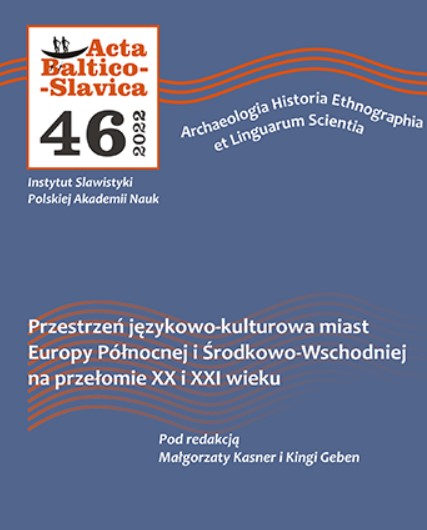Creating Urban Heterotopia: Užupis in the Focus of Literature and Film (Tūla by Jurgis Kunčinas and Ten Minutes Before the Flight of Icarus by Arūnas Matelis)
Creating Urban Heterotopia: Užupis in the Focus of Literature and Film (Tūla by Jurgis Kunčinas and Ten Minutes Before the Flight of Icarus by Arūnas Matelis)
Author(s): Gintarė BidlauskienėSubject(s): Comparative Study of Literature, Lithuanian Literature, Rural and urban sociology, Film / Cinema / Cinematography, Theory of Literature
Published by: Instytut Slawistyki Polskiej Akademii Nauk
Keywords: geocriticism; literary urban studies; heterotopia; thirdspace; Vilnius; Užupis; Jurgis Kunčinas; Arūnas Matelis;
Summary/Abstract: This article aims to analyze and compare two representations of the Vilnius district of Užupis: the literary image created in the novel Tūla by Jurgis Kunčinas (1993) and the cinematic image provided in the documentary Ten Minutes Before the Flight of Icarus by Arūnas Matelis (1990). Applying the approaches of geocriticism, urban studies, and intermedial contexts allows to relate these images in terms of the dominant motifs of the sensorial experience of the city related to two representational strategies: observing and walking in the city. In the novel Tūla, different gazing modes make the urban space visible, and the protagonist’s walking links particular urban objects to the whole referential space. In this way, the analysis of the representation of Vilnius, especially Užupis, in Tūla highlights the links between the construction of the fictional urban space and the structure of the city novel. Ten Minutes Before the Flight of Icarus focuses on the district of Užupis and the everyday life of its residents. The street-level camera eye matches the gaze of the potential perceiver and his bodily ability to grasp the space haptically, i.e. by footsteps. The movement on foot is essential as it connects all the spatial points into one entity and highlights a permanent link between walking in the city and storytelling as reading or writing. Ultimately, both representational strategies allow qualifying the area of Užupis as the “other” space or a heterotopia due to its distinctive language, which is also a bodily practice, intrinsic to both texts.
Journal: Acta Baltico Slavica
- Issue Year: 2022
- Issue No: 46
- Page Range: 1-18
- Page Count: 18
- Language: English

